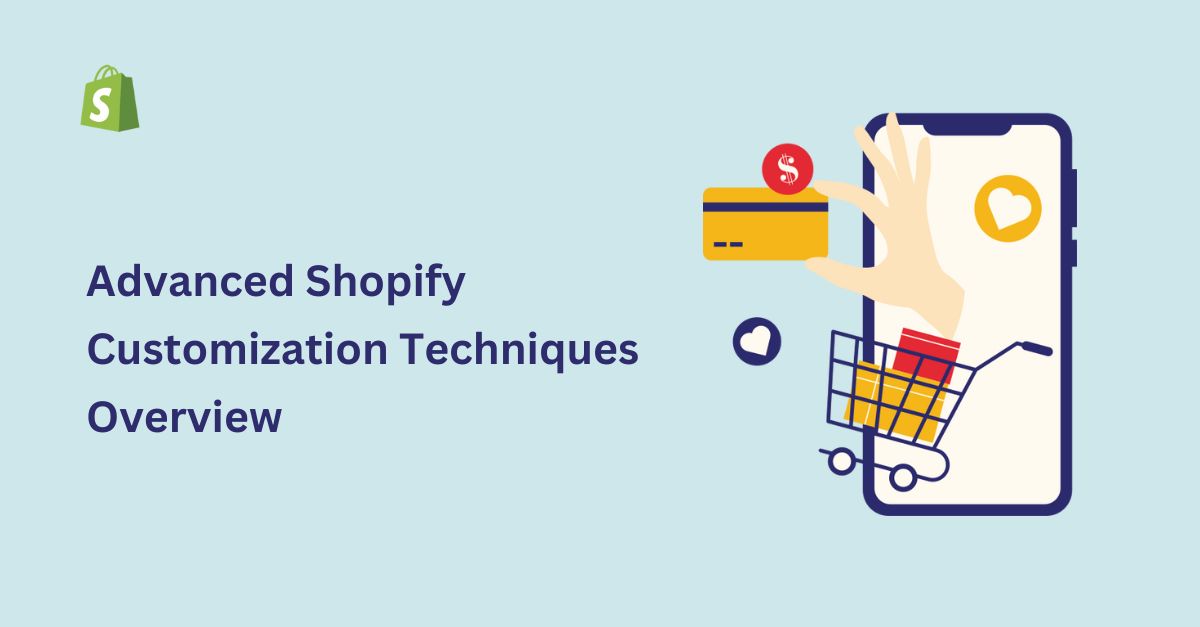In today’s competitive e-commerce landscape, standing out is crucial. Shopify customization allows store owners to tailor their online shops to meet unique business needs and customer preferences. With the right techniques, you can enhance user experience, drive conversions, and foster brand loyalty.
Importance of Customization
Customization plays a vital role in distinguishing your Shopify store from the myriad of others online. By tweaking various elements—from design to functionality—you can create a personalized shopping experience that resonates with your target audience. This can lead to higher engagement and sales.
Overview of Shopify’s Built-in Features
Shopify offers several built-in features designed to help you customize your store. These include a user-friendly theme editor, drag-and-drop functionality, and integration capabilities with numerous apps. Understanding these features is essential for leveraging Shopify’s potential to its fullest.
Understanding the Shopify Theme Architecture
Before diving into customization, it’s important to grasp the structure of Shopify themes. Each theme comprises various components that work together to create the final appearance and functionality of your store.
Structure of Shopify Themes
Shopify themes consist of several files and folders that define the layout, style, and behavior of your online store. This includes templates, stylesheets, and assets like images and scripts.
Liquid Templating Language
Liquid is the backbone of Shopify’s themes customization. It’s a flexible, open-source template language that allows you to load dynamic content. Understanding Liquid is crucial for advanced customization, as it enables you to manipulate and display data from your store.
Theme File Structure
The standard Shopify theme file structure includes directories such as:
- Templates: Control the layout of different pages (product, collection, cart).
- Sections: Modular components that can be reused across templates.
- Assets: Contains CSS, JavaScript, and images.
Familiarity with this structure will make your customization efforts much easier.
Customizing Your Shopify Theme
Once you understand the basics, you can start customizing your Shopify theme to align with your brand.
Editing Theme Settings
Shopify provides a theme settings panel that allows for basic adjustments, such as changing colors, fonts, and layouts. This is often the easiest way to make significant changes without delving into code.
Modifying the Code
For more advanced changes, you’ll need to modify the code directly. This involves accessing the theme editor in your Shopify admin panel, where you can edit Liquid files, CSS, and JavaScript.
Working with Liquid
Liquid enables you to create dynamic content. You can use Liquid tags to add logic to your templates, such as displaying products based on specific criteria or showing different content to logged-in users.
Adding Custom CSS and JavaScript
To enhance the design and interactivity of your site, you may want to add custom CSS and JavaScript. This can help in creating unique styles and functionality that aren’t available in the default theme settings.
Advanced Customization Techniques
For those looking to take their Shopify store to the next level, advanced customization techniques can provide significant enhancements.
Creating Custom Sections
Custom sections allow you to build unique layouts and functionalities within your pages. You can create sections that include various elements such as slideshows, featured products, and custom HTML.
Utilizing JSON Templates
JSON templates give you greater flexibility in designing your pages. With JSON, you can define custom settings for sections, making it easier to create reusable components throughout your store.
Customizing Checkout Pages
The checkout process is critical for conversions. Shopify allows some customization of the checkout pages, enabling you to modify colors, logos, and fields. For deeper customizations, Shopify Scripts can be utilized.
Using Shopify Scripts
Shopify Scripts is a powerful tool that enables you to create personalized checkout experiences. You can use it to apply discounts, set conditions for shipping, and customize payment methods based on customer segments.
Integrating Apps for Enhanced Functionality
One of Shopify’s strengths is its extensive app ecosystem. Many apps offer features that can enhance your store’s functionality without requiring heavy customization.
Popular Shopify Apps for Customization
There are numerous apps available that can help you customize your Shopify store. Some popular options include:
- Shogun: A drag-and-drop page builder that allows for advanced layout customization.
- PageFly: Another page builder with robust customization features.
- Bold Product Options: Enables you to create customizable product options.
API Integrations
Shopify also provides APIs that allow for deeper integrations with external services. You can create custom apps or use existing ones to extend your store’s capabilities, whether it’s for inventory management or customer relationship management.
Best Practices for Shopify Customization
To ensure your customization efforts yield positive results, consider these best practices.
Ensuring Site Speed and Performance
Performance is key for user experience and SEO. Keep your customizations lightweight and optimize images and scripts to ensure fast loading times.
Maintaining Mobile Responsiveness
With a growing number of users shopping on mobile devices, it’s essential to ensure that your customizations do not hinder the mobile experience. Use responsive design principles to create a seamless experience across devices.
Troubleshooting Common Customization Issues
Customization can sometimes lead to unexpected issues. Here are some common problems and how to resolve them.
Debugging Liquid Code
If you encounter issues with your Liquid code, check for syntax errors, ensure variables are correctly named, and use the Shopify console to troubleshoot.
Using Shopify Support Resources
Shopify offers a variety of support resources, including documentation, forums, and customer service. Utilize these resources when you face challenges during your customization journey.
Conclusion
Advanced Shopify customization techniques empower you to create a unique online store that reflects your brand identity and meets customer needs. By leveraging the tools and knowledge discussed in this article, you can enhance your Shopify experience, driving sales and fostering customer loyalty.
FAQs About Shopify Customization
What are the benefits of customizing Shopify?
Customizing Shopify allows you to create a unique brand identity, enhance user experience, and tailor functionalities to better meet your business needs, ultimately boosting sales and customer satisfaction.
Can I revert my changes if something goes wrong?
Yes, Shopify provides options to revert changes through version history or by restoring backups, ensuring you can recover from mistakes easily.
How do I find Shopify customization tutorials?
You can find Shopify customization tutorials on the Shopify Help Center, YouTube, and various blogs dedicated to e-commerce. Many developers also share guides on forums and community pages.
Is coding knowledge necessary for customization?
While basic customization can be done through the Shopify admin without coding, more advanced changes may require HTML, CSS, or Liquid knowledge. Familiarity with coding enhances your customization options.
How often should I update my theme?
It’s recommended to update your theme whenever a new version is released, as updates often include new features, security improvements, and bug fixes that enhance performance.
What are the risks of extensive customization?
Extensive customization can lead to compatibility issues with future updates, slower site performance, or increased maintenance needs. It’s important to balance customization with ease of use and stability.


